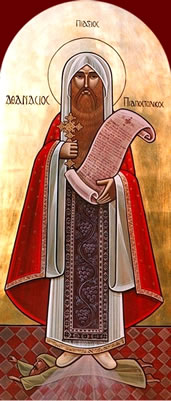Council of Ephesus, Third Ecumenical Council (AD 431)
| Date | June 22 to July 31, 431 |
| Location | Ephesus |
| Number of Participants | 150-200 |
| Summoned by | Emperor Theodosius II |
| Chaired by | Cyril of Alexandria (West); John of Antioch (East); |
| Key Participants | Cyril of Alexandria; Memnon of Epehesus; John of Antioch; Juvenal of Jerusalem |
| Purpose | To resolve the growing tension over proper christological terms referring to Christ’s incarnation (i.e. Nestorius’s rejection of the term theotokos). |
| Key Events | Before the arrival of the Roman and Syrian delegations, the first session approved Cyril’s formulations and deposed Nestorius. After their arrival, John and his Syrian delegation met separately and condemned Cyril and Memnon. When the council reconvened under the leadership of Cyril, John of Antioch and 34 other Eastern bishops were deposed, and the sufficiency of the Nicene Creed was declared. An imperial decree at first confirmed all the condemnations on both sides. Eventually Cyril’s position was upheld, Nestorius was exiled, and it was several years before John of Antioch was reconciled to Cyril’s position. |
| Primary Source Descriptions | The proceedings (in Greek and Latin) and much supporting documentation are found in the Acta Conciliorum Oecumenicorum, Tome 1 (ed. E. Schwartz, 1922-1930).Socrates, HE, 7.34 |
The council held in Ephesus from June 22 to July 31, 431 is the earliest council for which the acta (minutes or proceedings) have survived. In fact they have survived in several versions, in both Greek and Latin as well as partly in Coptic. Between 1922 and 1930, the Greek and Latin versions were edited by Eduard Schwartz as Tome I of the Acta Counciliorum Oecumenicorum (ACO). Rather than attempting to print one definitive version of the council’s proceedings, Schwartz presented each version separately. While this makes the edition more complete, it also creates something of a maze for those seeking to find specific material. Our ACO homepage and subpages will help you sort through the material if you are looking for a specific document. Tome 1, Volume 1 contains the Greek acts in 7 parts (part 8 is an index volume). Hence 1.1.5:45 would refer to Tome 1 (= Council of Ephesus), Volume 1 (Greek acts), Part 5, page 45. The Latin acts are found in Tome 1, Volumes 2-5 (without additional subsections). So 1.3:89 would indicate Tome 1, Part 3 (Latin acts), page 89
We have attempted to add some additional clarity to the surviving source material by providing additional chronological lists of the documents involved in the council. The first one lists some 14 relevant writings that document the development of the controversy (419 through 429); additional charts will list other documents before, during, and in the immediate aftermath of the council. While it is not always possible to ascertain the precise date of a document (as most do not carry specific dates), we have used secondary studies to assist us in re-arranging the material as carefully as possible. For each item, the incipit (the opening words of the body of the work or letter) is given in Greek, Latin, or both, indicating the languages in which the document has survived. The Greek text is listed first if that is considered the original (and vice versa). Our lists also provide the location of the primary document within the ACO or other work, and also tells where English translations are available. We hope to provide new translations of many key documents in the coming months and those can be accessed by clicking on the link in the translation column of the lists. Wherever possible, we hope to provide the key texts and translations in parallel columns for ease of consultation by both specialists and non-specialists.
In order to assist the reader in making sense of the many documents, we have also provided a chronological narrative that explains the documents and their connection with each other.
Several decades after the publication of the ACO material, M. Geerard began his very useful series Clavis Patrum Graecorum (CPG) in which he gave a unique number to each individual document of the Greek fathers. In volume 3, he lists all the writings, letters, and sermons of Cyril of Alexandria, Nestorius, and the other fathers involved in the controversy (the numbers run from 5200-6724 for the fifth century). These are extremely useful since often there were several letters exchanged between the participants that can be easily confused. We provide the CPG number wherever possible on fourthcentury.com, together with the work’s incipit, to ensure that the reader has found the proper document under discussion. Unfortunately for today’s users, the ACO did not have access to this system, and so its cross-referencing is much more cumbersome. Because there are additional documents involved in the councils that were not written by church fathers, but by emperors and imperial officials, Geerard added a fourth volume to CPG in which he lists almost all the documents found in ACO and elsewhere relating to the councils. This list (running from 8620-8867 for those items relating to the Council of Ephesus) does include cross references to letters of the fathers in volume 3 where applicable. This explains why at times a document will have two CPG numbers.
Bibliography
McGuckin, J. St. Cyril of Alexandria: The Christological Controversy (Crestwood, NY: St. Vladimir’s Seminary Press, 2004).
Price, R. and T. Graumann, The Council of Ephesus of 431: Documents and Proceedings. Translated Texts for Historians 72 (Liverpool: Liverpool University Press, 2020),
Simonetti, M. “Ephesus,” in The Encyclopedia of the Early Church (New York: Oxford University Press, 1992)
Wessel, S. Cyril of Alexandria and the Nestorian Controversy: The Making of a Saint and a Heretic (Oxford: Oxford University Press, 2004).
Created by PSAM; revised by GLT;
Last updated 2-11-2025 by JSW
No Responses yet
